How Long After a Goat Gives Birth Can She Get Pregnant Again?
Do nosotros actually alive longer than our ancestors?
(Image credit:
BBC/Getty
)
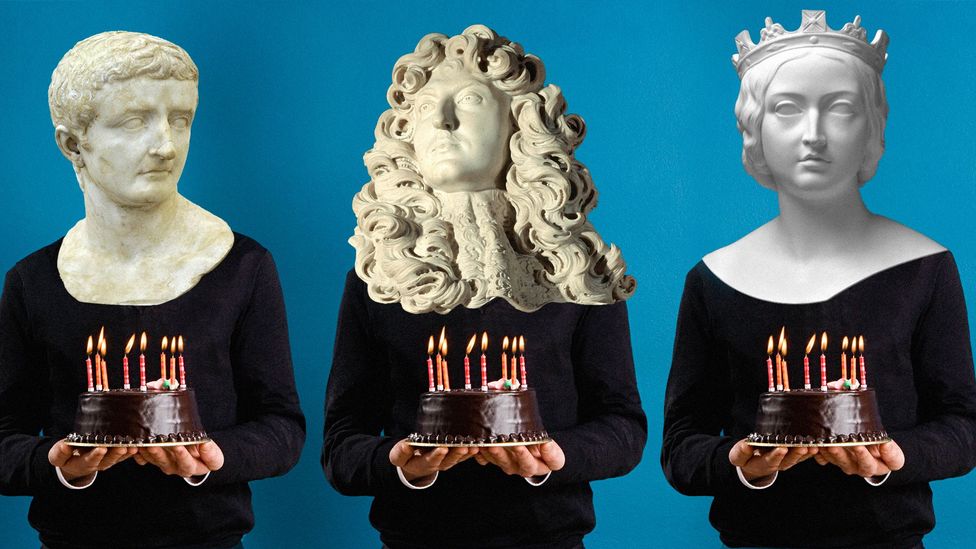
The wonders of modern medicine and diet make information technology easy to believe we enjoy longer lives than at any time in human history, but nosotros may not exist that special after all.
O
Over the final few decades, life expectancy has increased dramatically around the earth. The average person born in 1960, the earliest twelvemonth the United Nations began keeping global data, could await to live to 52.5 years of age. Today, the boilerplate is 72. In the Uk, where records have been kept longer, this trend is even greater. In 1841, a infant girl was expected to live to merely 42 years of age, a boy to forty. In 2016, a baby girl could look to reach 83; a boy, 79.
The natural conclusion is that both the miracles of modern medicine and public health initiatives take helped united states of america live longer than ever before – then much and then that nosotros may, in fact, be running out of innovations to extend life further. In September 2018, the Office for National Statistics confirmed that, in the Uk at least, life expectancy has stopped increasing. Beyond the UK, these gains are slowing worldwide.
This belief that our species may have reached the peak of longevity is also reinforced by some myths nearly our ancestors: it's common belief that ancient Greeks or Romans would have been flabbergasted to run into anyone to a higher place the age of 50 or 60, for instance.
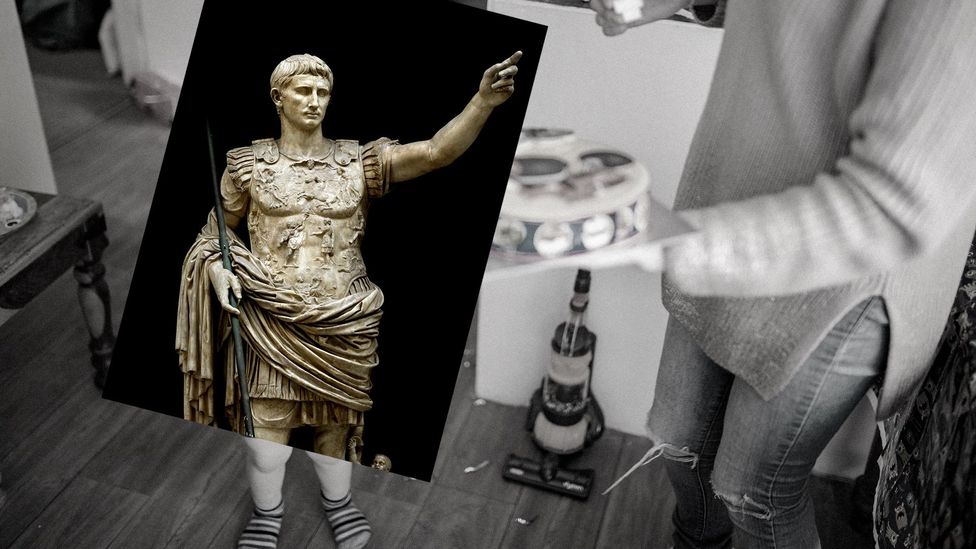
Rome's first emperor, Augustus, died at 75 – underscoring the stardom between our ancestors' boilerplate life expectancy versus their life bridge (Credit: BBC/Getty)
"In that location is a basic distinction betwixt life expectancy and life span," says Stanford Academy historian Walter Scheidel, a leading scholar of ancient Roman demography. "The life span of humans – opposed to life expectancy, which is a statistical construct – hasn't actually changed much at all, every bit far as I can tell."
Life expectancy is an average. If you lot accept two children, and one dies before their first birthday merely the other lives to the age of 70, their boilerplate life expectancy is 35.
That'southward mathematically correct – and information technology certainly tells u.s. something nearly the circumstances in which the children were raised. Only information technology doesn't give us the total motion-picture show. Information technology also becomes especially problematic when looking at eras, or in regions, where there are high levels of babe mortality. Most of human history has been fated by poor survival rates amongst children, and that continues in various countries today.
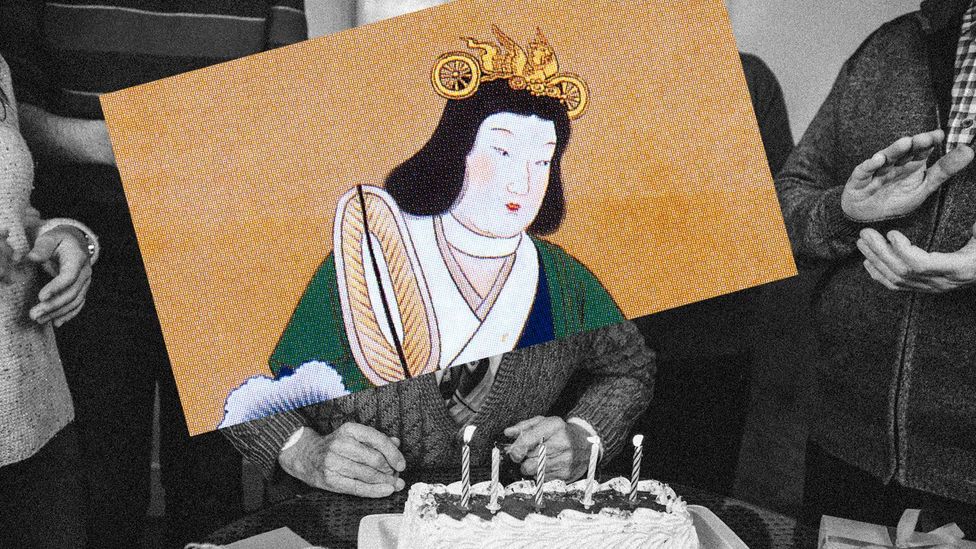
The sixth-Century ruler Empress Suiko, who was Japan'southward offset reigning empress in recorded history, died at 74 years of age (Credit: BBC/Getty)
This averaging-out, yet, is why information technology'due south commonly said that ancient Greeks and Romans, for example, lived to just 30 or 35. Merely was that really the example for people who survived the fragile menstruation of childhood, and did it mean that a 35-year-old was truly considered 'quondam'?
If ane'southward thirties were a bedraggled old age, aboriginal writers and politicians don't seem to have got the message. In the early 7th Century BC, the Greek poet Hesiod wrote that a man should ally "when you lot are not much less than xxx, and not much more". Meanwhile, ancient Rome'due south 'cursus honorum' – the sequence of political offices that an ambitious young man would undertake – didn't even allow a young man to stand for his starting time office, that of quaestor, until the age of 30 (under Emperor Augustus, this was after lowered to 25; Augustus himself died at 75). To exist consul, you had to be 43 – viii years older than the US's minimum age limit of 35 to hold a presidency.
In the 1st Century, Pliny devoted an entire chapter of The Natural History to people who lived longest. Among them he lists the consul M Valerius Corvinos (100 years), Cicero's wife Terentia (103), a woman named Clodia (115 – and who had 15 children along the way), and the actress Lucceia who performed on stage at 100 years sometime.
Then at that place are tombstone inscriptions and grave epigrams, such as this one for a woman who died in Alexandria in the 3rd Century BC. "She was fourscore years sometime, but able to weave a delicate weft with the shrill shuttle", the epigram reads admiringly.
Non, however, that ageing was any easier so than it is now. "Nature has, in reality, bestowed no greater approving on human being than the shortness of life," Pliny remarks. "The senses go wearisome, the limbs torpid, the sight, the hearing, the legs, the teeth, and the organs of digestion, all of them die before united states…" He can retrieve of simply one person, a musician who lived to 105, who had a pleasantly healthy old historic period. (Pliny himself reached barely half that; he's thought to have died from volcanic gases during the eruption of Mt Vesuvius, aged 56).
In the aboriginal world, at least, it seems people certainly were able to live just every bit long every bit we do today. Only simply how mutual was it?
Age of empires
Back in 1994 a study looked at every man entered into the Oxford Classical Dictionary who lived in ancient Greece or Rome. Their ages of expiry were compared to men listed in the more than recent Chambers Biographical Dictionary.
Of 397 ancients in total, 99 died violently past murder, suicide or in battle. Of the remaining 298, those born earlier 100BC lived to a median historic period of 72 years. Those born later 100BC lived to a median age of 66. (The authors speculate that the prevalence of dangerous pb plumbing may have led to this apparent shortening of life).
The median of those who died between 1850 and 1949? Seventy-one years sometime – just one year less than their pre-100BC cohort.
Of course, there were some obvious problems with this sample. One is that it was men-only. Another is that all of the men were illustrious plenty to be remembered. All we tin really take abroad from this is that privileged, achieved men have, on average, lived to about the same age throughout history – equally long as they weren't killed outset, that is.
Nonetheless, says Scheidel, that's not to exist dismissed. "It implies there must have been not-famous people, who were much more numerous, who lived fifty-fifty longer," he says.
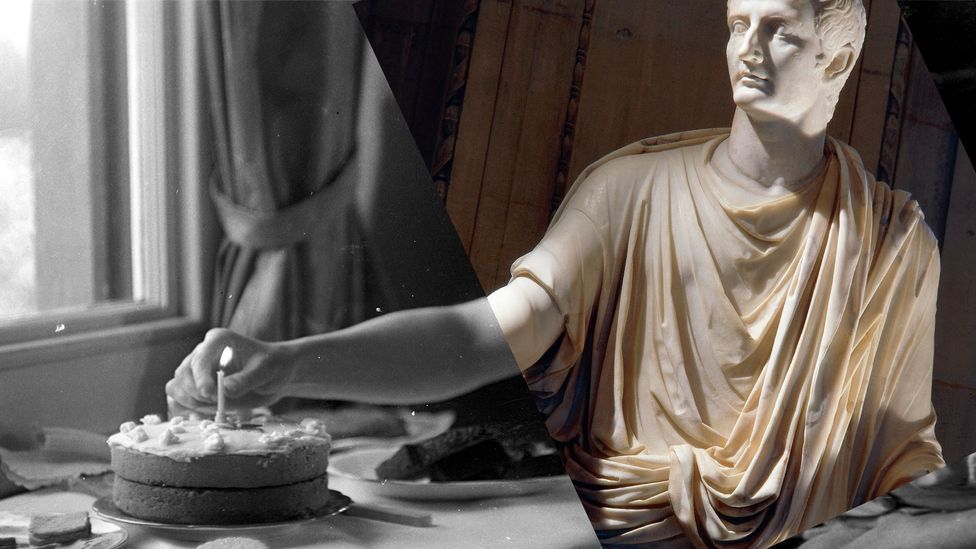
The Roman emperor Tiberius died at the age of 77 – some accounts say by murder (Credit: BBC/Getty)
Non everyone agrees. "There was an enormous difference between the lifestyle of a poor versus an elite Roman," says Valentina Gazzaniga, a medical historian at Rome'southward La Sapienza University. "The conditions of life, admission to medical therapies, even just hygiene – these were all certainly better amidst the elites."
In 2016, Gazzaniga published her enquiry on more than than 2,000 ancient Roman skeletons, all working-class people who were buried in common graves. The average age of death was 30, and that wasn't a mere statistical quirk: a high number of the skeletons were around that age. Many showed the furnishings of trauma from hard labour, every bit well as diseases we would acquaintance with later ages, like arthritis.
Men might have borne numerous injuries from manual labour or military service. But women – who, it's worth noting, also did hard labour such as working in the fields – hardly got off piece of cake. Throughout history, childbirth, often in poor hygienic conditions, is only one reason why women were at particular hazard during their fertile years. Even pregnancy itself was a danger.
"We know, for example, that existence significant adversely affects your immune organization, considering you've basically got some other person growing inside you," says Jane Humphries, a historian at the Academy of Oxford. "Then y'all tend to be susceptible to other diseases. So, for case, tuberculosis interacts with pregnancy in a very threatening mode. And tuberculosis was a affliction that had higher female than male person mortality."
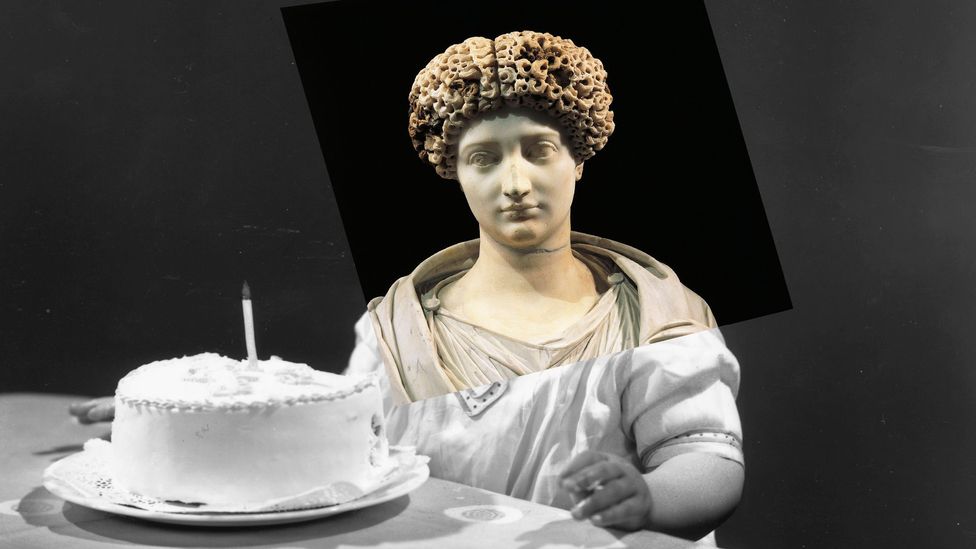
The Roman noble Julia the Elderberry died in the year xiv at the age of 54, but nearly sources agree her death was the untimely event of exile and imprisonment (Credit: BBC/Getty)
Childbirth was worsened by other factors too. "Women often were fed less than men," Gazzaniga says. That malnutrition means that young girls frequently had incomplete evolution of pelvic bones, which then increased the risk of difficult child labour.
"The life expectancy of Roman women actually increased with the decline of fertility," Gazzaniga says. "The more than fertile the population is, the lower the female life expectancy."
Missing people
The difficulty in knowing for sure just how long our average predecessor lived, whether ancient or pre-historic, is the lack of information. When trying to determine average ages of death for ancient Romans, for instance, anthropologists often rely on demography returns from Roman Egypt. But because these papyri were used to collect taxes, they often under-reported men – likewise as left out many babies and women.
Tombstone inscriptions, left behind in their thousands by the Romans, are another obvious source. But infants were rarely placed in tombs, poor people couldn't afford them and families who died simultaneously, such as during an epidemic, also were left out.
And even if that weren't the case, there is another trouble with relying on inscriptions.
"You need to live in a world where yous take a certain amount of documentation where it can even be possible to tell if someone lived to 105 or 110, and that merely started quite recently," Scheidel points out. "If someone really lived to be 111, that person might not take known."
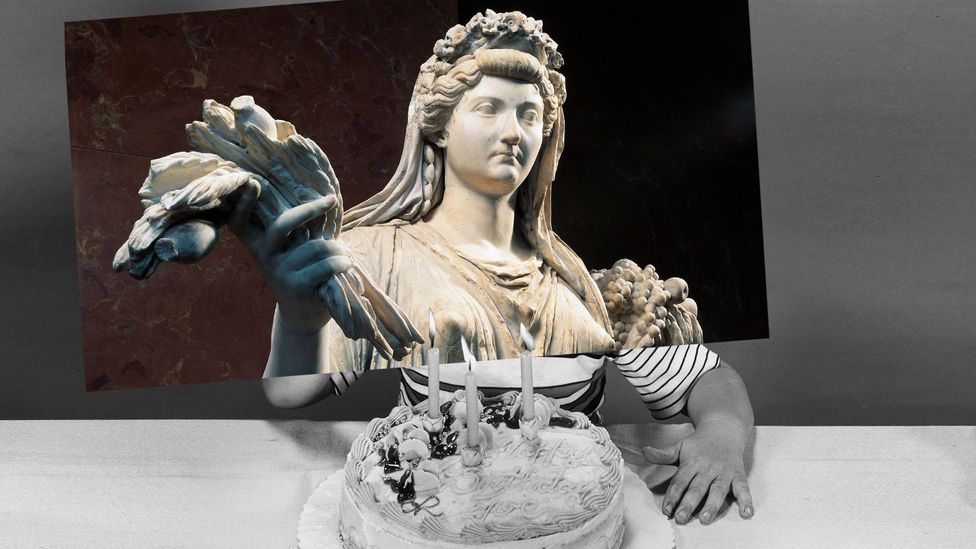
The Roman empress Livia, wife of Augustus, lived until she was 86 or 87 years onetime (Credit: BBC/Getty)
As a result, much of what we think nosotros know near ancient Rome'due south statistical life expectancy comes from life expectancies in comparable societies. Those tell us that as many equally one-third of infants died before the age of ane, and one-half of children before age 10. Later on that historic period your chances got significantly better. If you fabricated information technology to threescore, you lot'd probably live to be lxx.
Taken altogether, life span in aboriginal Rome probably wasn't much different from today. It may have been slightly less "because you don't have this invasive medicine at end of life that prolongs life a little bit, simply not dramatically different", Scheidel says. "Y'all can have extremely low average life expectancy, because of, say, pregnant women, and children who die, and still have people to live to 80 and 90 at the same time. They are but less numerous at the finish of the day because all of this compunction kicks in."
Of course, that attrition is not to exist sniffed at. Peculiarly if you lot were an infant, a woman of childbearing years or a hard labourer, yous'd be far improve off choosing to live in year 2022 than 18. But that yet doesn't hateful our life span is actually getting significantly longer as a species.
On the record
The data gets amend later in human history one time governments begin to keep careful records of births, marriages and deaths – at commencement, particularly of nobles.
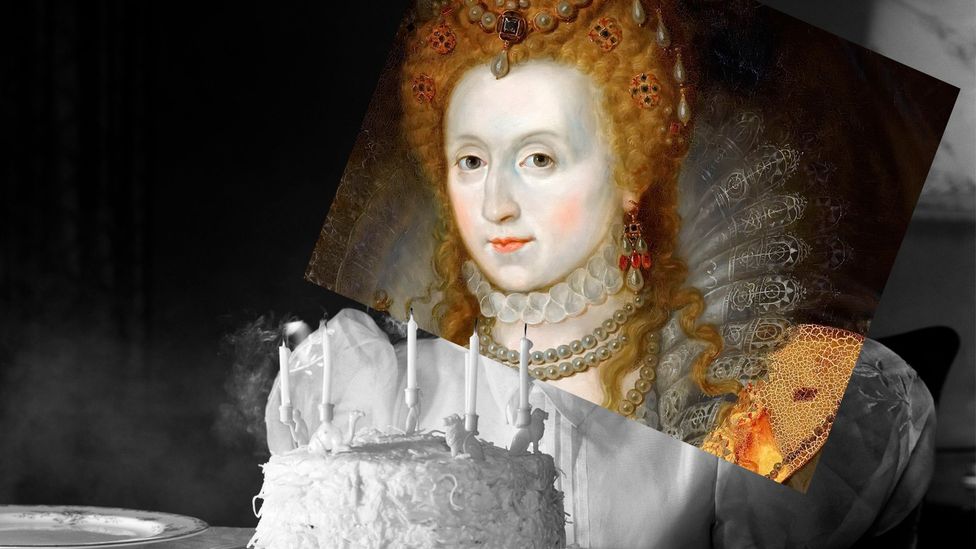
Queen Elizabeth I lived until the age of seventy; life expectancy at the time could be longer for villagers than for royals (Credit: BBC/Getty)
Surely, by the soot-ridden era of Charles Dickens, life was unhealthy and curt for nearly everyone? Even so no. As researchers Judith Rowbotham, at present at the University of Plymouth, and Paul Clayton, of Oxford Brookes University, write, "once the dangerous childhood years were passed… life expectancy in the mid-Victorian flow was not markedly different from what information technology is today". A 5-year-old girl would live to 73; a male child, to 75.
Not only are these numbers comparable to our own, they may be fifty-fifty ameliorate. Members of today's working-grade (a more accurate comparing) live to around 72 years for men and 76 years for women.
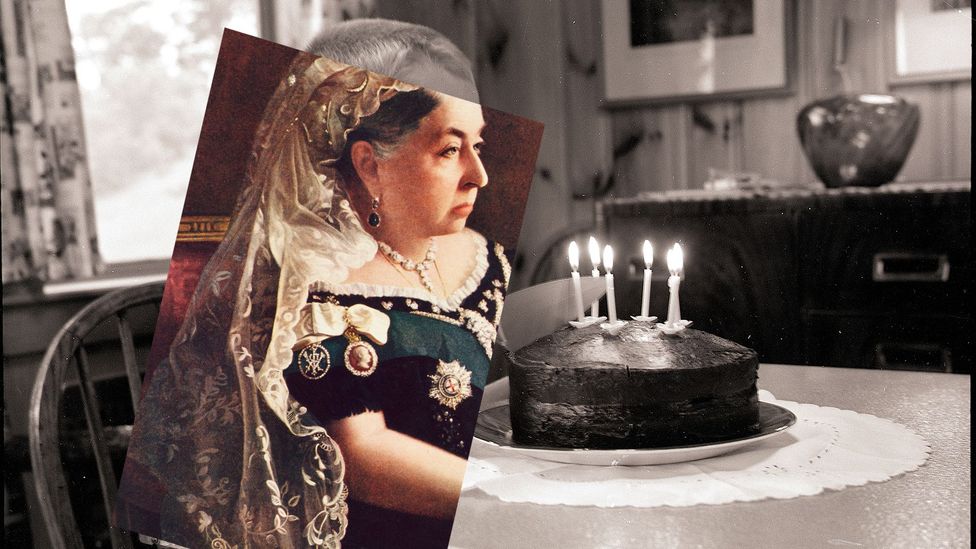
Britain's Queen Victoria died in 1901 at the age of 81. During her reign, a girl could expect to live to nearly 73 years of age, a boy to 75 (Credit: BBC/Getty)
"This relative lack of progress is hitting, especially given the many environmental disadvantages during the mid-Victorian era and the land of medical care in an age when modernistic drugs, screening systems and surgical techniques were self-evidently unavailable," Rowbotham and Clayton write.
They argue that if we think we're living longer than e'er today, this is because our records go back to effectually 1900 – which they telephone call a "misleading baseline", equally it was at a time when nutrition had decreased and when many men started to smoke.
Pre-historic people
What about if we look in the other direction in fourth dimension – earlier any records at all were kept?
Although it is patently difficult to collect this kind of data, anthropologists have tried to substitute by looking at today'south hunter-gatherer groups, such as the Ache of Paraguay and Hadza of Tanzania. They found that while the probability of a newborn's survival to historic period 15 ranged between 55% for a Hadza boy upwardly to 71% for an Ache male child, once someone survived to that point, they could expect to live until they were between 51 and 58 years former. Information from mod-day foragers, who accept no access to medicine or modern food, write Michael Gurven and Cristina Gomes, finds that "while at birth mean life expectancies range from 30 to 37 years of life, women who survive to historic period 45 tin can wait to live an boosted twenty to 22 years" – in other words, from 65 to 67 years former.
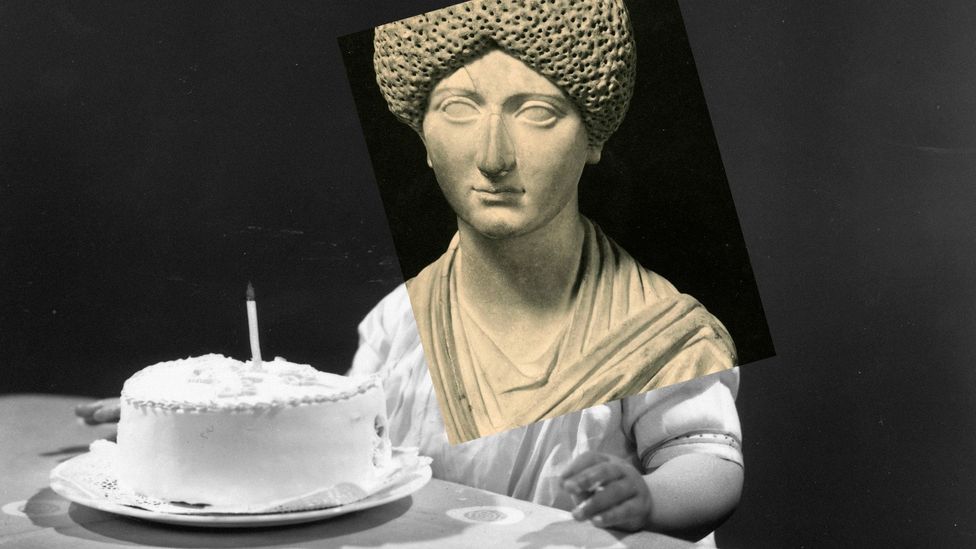
The Roman empress Domitia died in 130 at the age of 77 (Credit: BBC/Alamy)
Archaeologists Christine Cavern and Marc Oxenham of Australian National University accept recently institute the same. Looking at dental article of clothing on the skeletons of Anglo-Saxons buried almost 1,500 years ago, they found that of 174 skeletons, the majority belonged to people who were under 65 – simply at that place likewise were sixteen people who died between 65 and 74 years former and nine who reached at least 75 years of age.
Our maximum lifespan may not have changed much, if at all. But that's not to delegitimise the extraordinary advances of the concluding few decades which have helped and so many more than people reach that maximum lifespan, and live healthier lives overall.
Perchance that'south why, when asked what by era, if whatever, she'd adopt to alive in, Oxford'due south Humphries doesn't hesitate.
"Definitely today," she says. "I think women's lives in the past were pretty nasty and brutish – if not and so short."
Amanda Ruggeri is BBC Futurity's senior editor. She can be found at @amanda_ruggeri on Twitter.
Join 900,000+ Future fans by liking united states of america on Facebook , or follow us on Twitter or Instagram .
If you liked this story, sign up for the weekly bbc.com features newsletter , chosen "If Yous Only Read 6 Things This Week". A handpicked selection of stories from BBC Future, Culture, Uppercase, and Travel, delivered to your inbox every Friday.
Source: https://www.bbc.com/future/article/20181002-how-long-did-ancient-people-live-life-span-versus-longevity
0 Response to "How Long After a Goat Gives Birth Can She Get Pregnant Again?"
Post a Comment